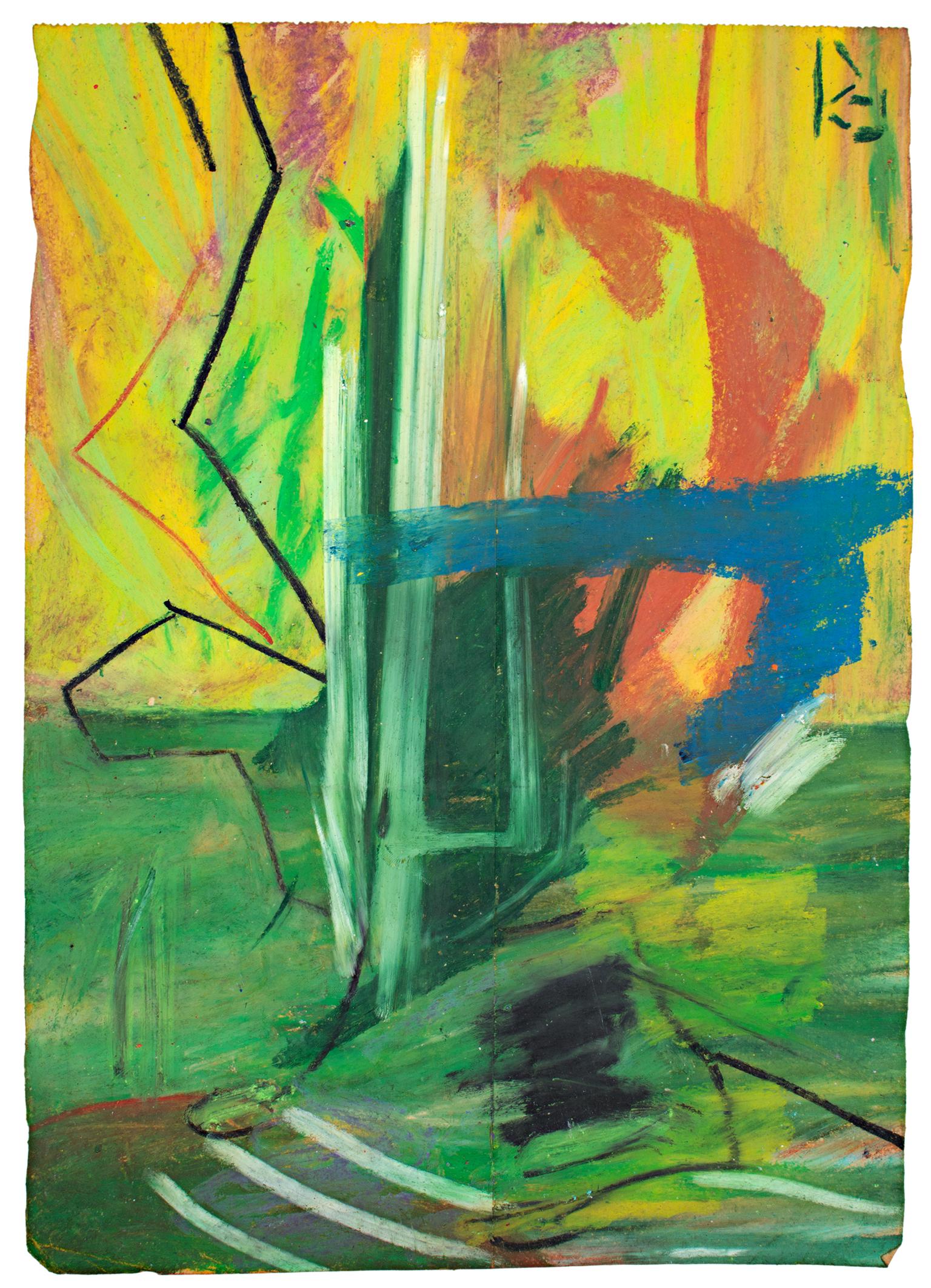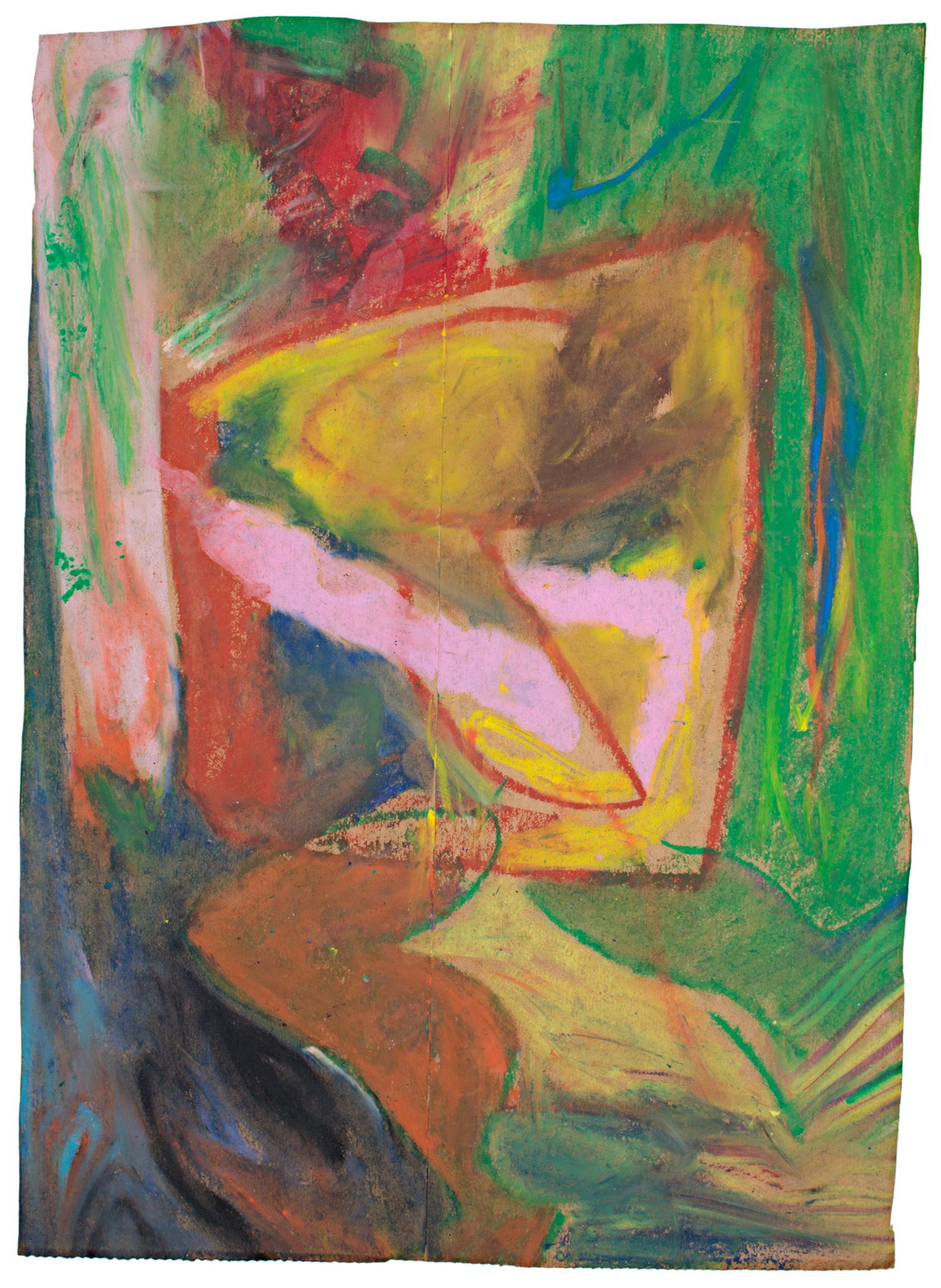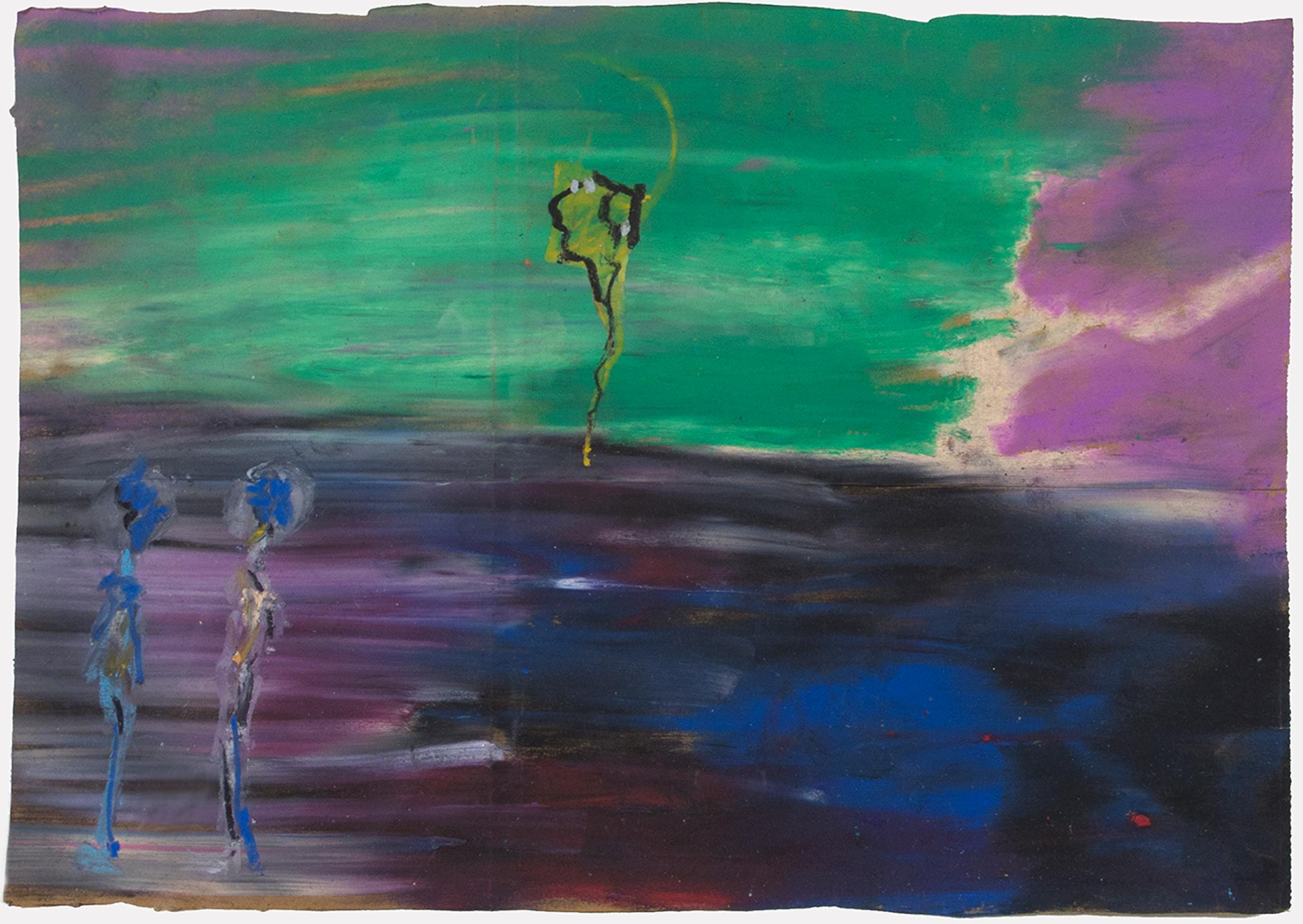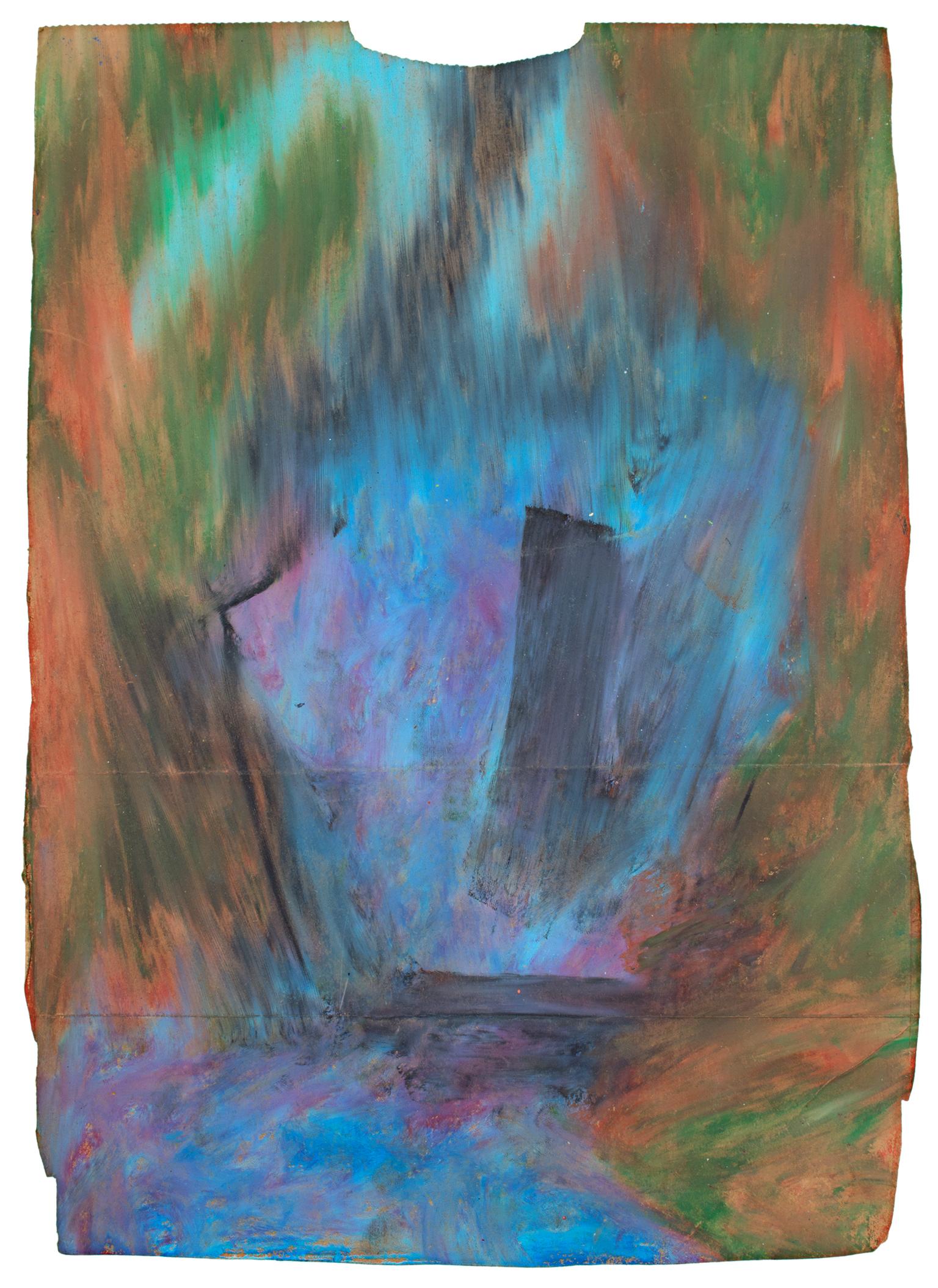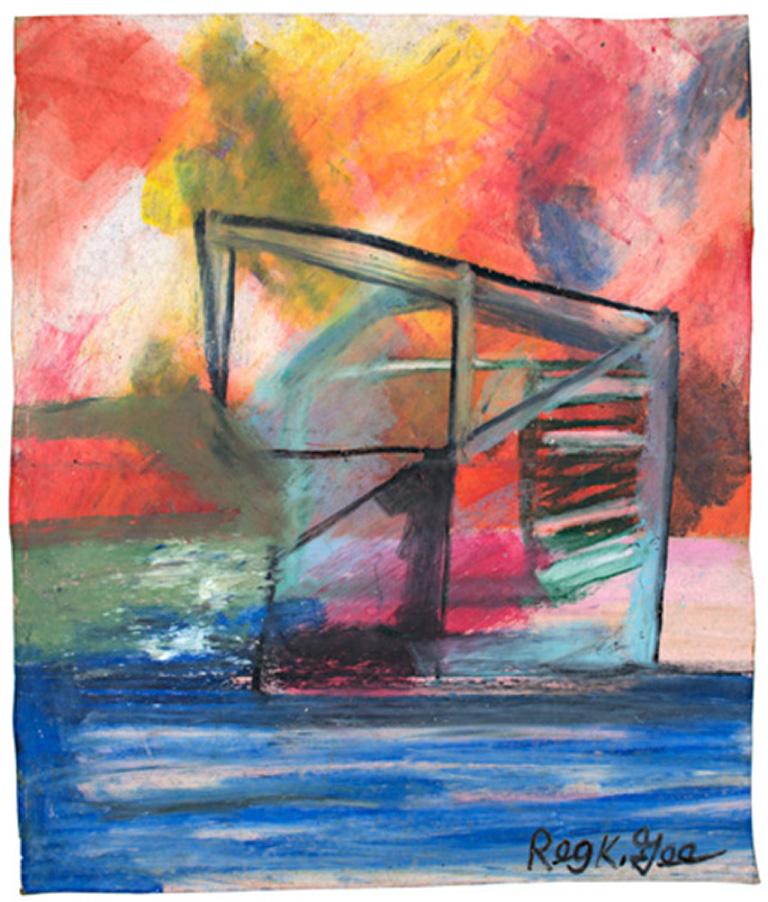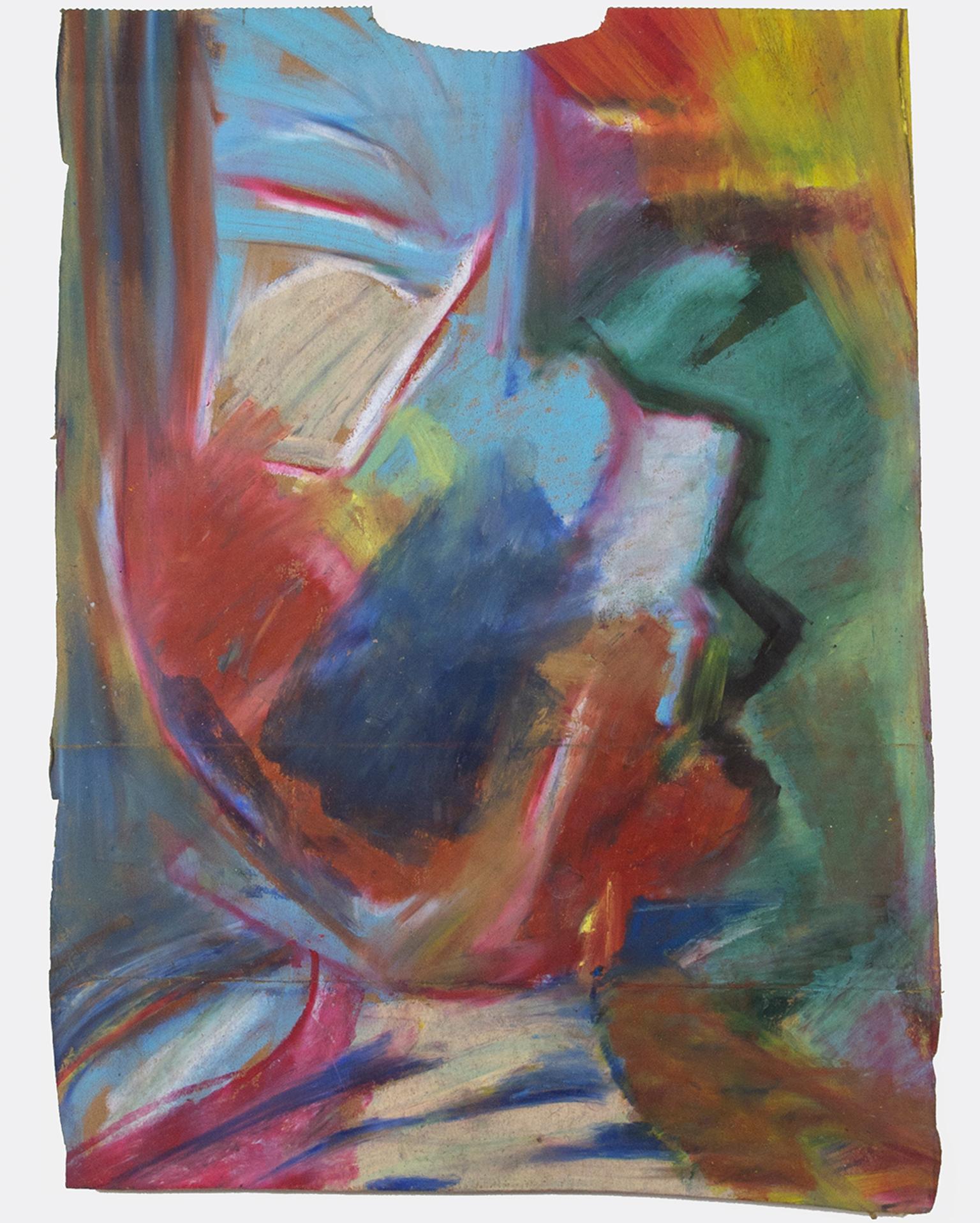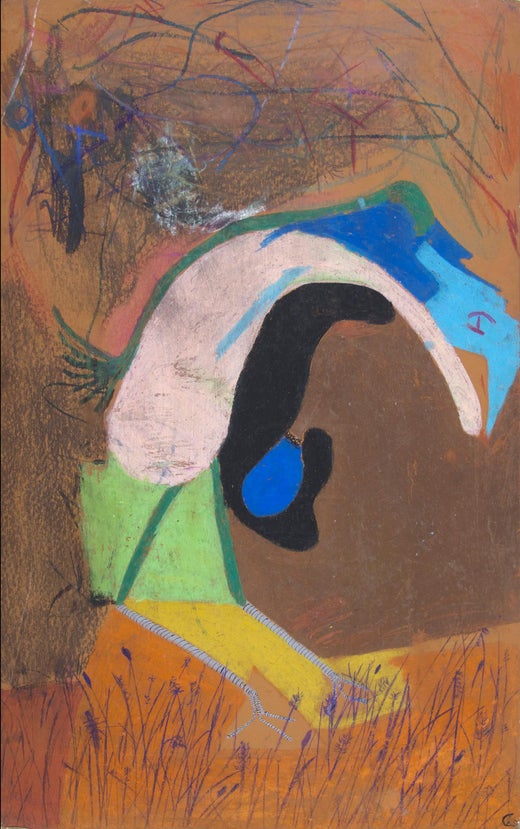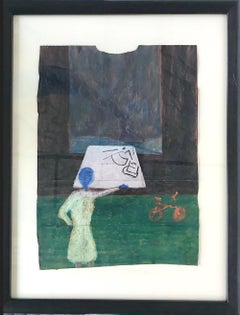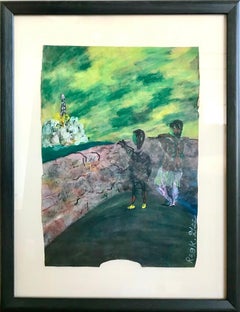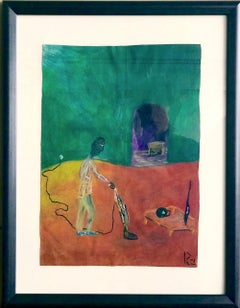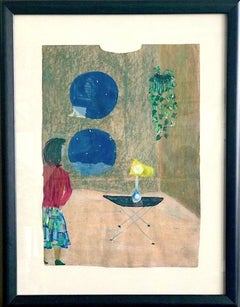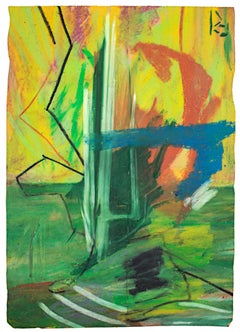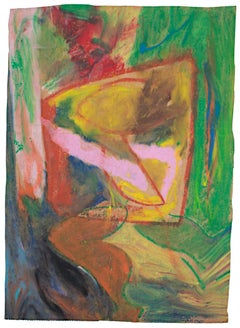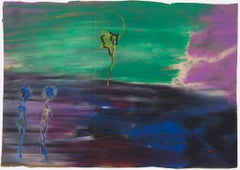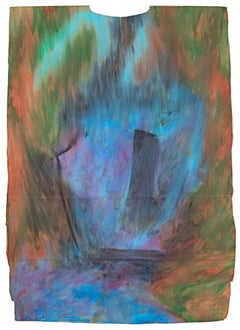Reginald K. GeeCURIOUS PHENOMENA Signed Oil Pastel on Grocery Bag, Abstract Landscape, Green1995
1995
About the Item
- Creator:Reginald K. Gee (1964, American)
- Creation Year:1995
- Dimensions:Height: 23 in (58.42 cm)Width: 17.75 in (45.09 cm)Depth: 1 in (2.54 cm)
- Medium:
- Movement & Style:
- Period:
- Condition:Excellent condition, archival framing, signed on reverse by the artist Reggie K. Gee., one of a kind original drawing.
- Gallery Location:Union City, NJ
- Reference Number:1stDibs: LU83234683442
Reginald K. Gee
Reginald K. Gee, a contemporary artist of African American and Native American heritage, is known for his visionary Neo-Expressionist art. Some of the themes explored by this artist include playful musicians, surreal landscapes and seascapes, mystical dreams and fantastic visions.
Gee, born in Milwaukee in 1964, is emerging as a national tour de force on the contemporary art scene. He is a self-taught artist and writer, and his interpretation of subject matter is unique, inventive and illustrates his command of expression in form, color and language. The artist incorporates his own visionary images, symbols, and numerology into his work.
Gee's paintings are figurative, abstract and narrative, expressing through the use of uninhibited color the artist's views of contemporary society. When asked how he learned about art, Gee replied, "I didn't. I still haven't learned. You just do it.” The Milwaukee Journal Sentinel describes Gee's art as "tribal art derived from pop culture and art magazines.”
In recent years, Gee has participated in dozens of shows including "Soul of Black Folk" and the "Chicago Black Art Expo." Gee is influenced by Picasso, de Kooning, Francis Bacon, Jean Michel Basquiat and David Salle. He currently resides in Milwaukee, Wisconsin.
Find original Reginald K. Gee paintings, drawings and other art on 1stDibs.
(Biography provided by David Barnett Gallery)
- ShippingRetrieving quote...Shipping from: Union City, NJ
- Return Policy
More From This Seller
View All1990s Neo-Expressionist Figurative Drawings and Watercolors
Oil Pastel
1990s Neo-Expressionist Figurative Drawings and Watercolors
Oil Pastel
1990s Neo-Expressionist Figurative Drawings and Watercolors
Oil Pastel
1990s Neo-Expressionist Figurative Drawings and Watercolors
Oil Pastel
1990s Neo-Expressionist Abstract Drawings and Watercolors
Oil Pastel
1990s Neo-Expressionist Figurative Drawings and Watercolors
Oil Pastel
You May Also Like
1990s Contemporary Abstract Drawings and Watercolors
Oil Pastel, Found Objects
1990s Contemporary Abstract Drawings and Watercolors
Oil Pastel, Found Objects
1990s Contemporary Figurative Drawings and Watercolors
Oil Pastel, Found Objects
1990s Contemporary Abstract Drawings and Watercolors
Oil Pastel, Found Objects
1990s Contemporary Landscape Paintings
Oil Pastel
1990s Contemporary Abstract Drawings and Watercolors
Oil Pastel, Found Objects
